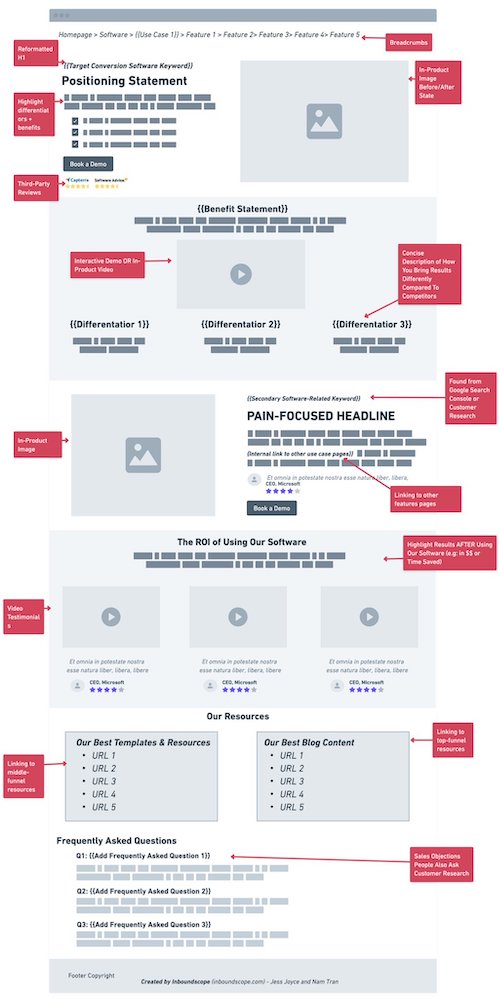If you’re looking to enhance conversions on your use case pages, it’s essential to understand that the pathway from visitor interest to customer action is not just a straight line – it’s a strategically designed journey. The framework we’re exploring today, courtesy of inboundscope.com, demonstrates how a well-structured use case page can guide potential customers through that journey.
Begin with a Clear Path
The framework starts with clearly defined breadcrumbs. This not only helps with SEO by embedding a logical structure and relevant keywords but also assists users in navigating through the different stages of your software’s use cases. Each breadcrumb is an opportunity to subtly reinforce the path to conversion.
Positioning is Key
Your positioning statement should be a beacon, clearly highlighting your product’s unique value proposition. Use targeted conversion software keywords to make sure you’re speaking the language of your audience and the search engines alike, but remember to keep it human and approachable.
Distinguish Yourself – Follow Your Different
Differentiators are your best friends. Follow your different. Separate your product from the pack and give your potential customers a reason to choose you. Three differentiators are highlighted in the framework, each one underlining a unique aspect of your software that addresses specific customer needs or pain points.
Show, Don’t Just Tell
In-product images and an interactive demo or product video aren’t just eye candy – they’re your chance to show your software in action. It provides tangible evidence of your software’s benefits and capabilities, encouraging users to engage deeper with your content. But, do not embed or add massive videos or animated gifs, always be mindful of pagesize and speed.
Speak to the Pain
The pain-focused headline taps into the user’s primary reason for seeking out your software. Back this up with a secondary software-related keyword for SEO and provide an internal link to other use case pages to keep the user’s journey within your site and allow them to probe deeper. As the user navigates deeper into your content, a passive visitor transforms to potential customer.
Testimonials as Social Proof
Leveraging testimonials, especially video testimonials, is a powerful form of social proof. When potential customers see others, especially from recognizable companies, praising your software, it builds credibility and trust.
Resourceful Links
Linking to middle-funnel and top-funnel resources serves a dual purpose. It aids in SEO by creating a robust internal linking structure and provides users with additional valuable content that can help move them through the conversion funnel.
Addressing Questions Proactively
The Frequently Asked Questions (FAQ) section is a must-have for preemptively tackling sales objections and providing clear, concise answers to common queries based on customer research. Adding answers to the biggest knows objections is like having a copy of a test the night before the exam, you will excel.
Putting It All Together
This framework isn’t just a template; it’s a strategic approach to crafting use case pages that are optimized for both search engines and user experience. By implementing this structured approach, you can expect to see an uptick in your conversion rates as you meet users at every point of their decision-making process.
Remember, the key to conversion is not just in the design but in the details that make up the entirety of the user’s journey on your site. Every element from the headline to the footer plays a role in guiding the user towards that all-important action – whether it’s booking a demo or making a purchase.
Attribution: This insightful framework was created by the talented team at inboundscope.com – Jess Joyce and Nam Tran, whose expertise in SEO and conversion optimization is clearly evident in their methodical approach.
Here is the framework image again:


